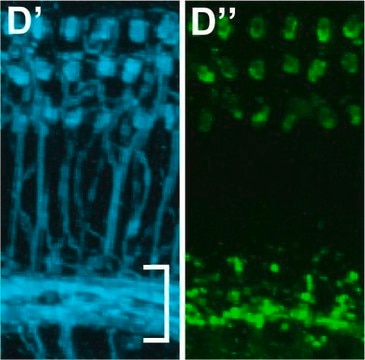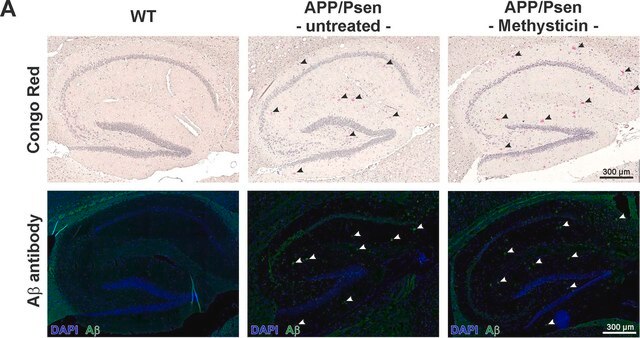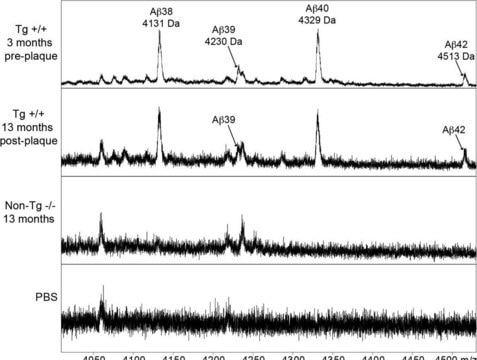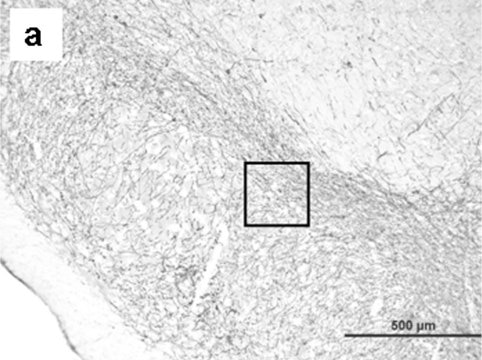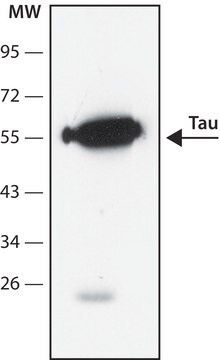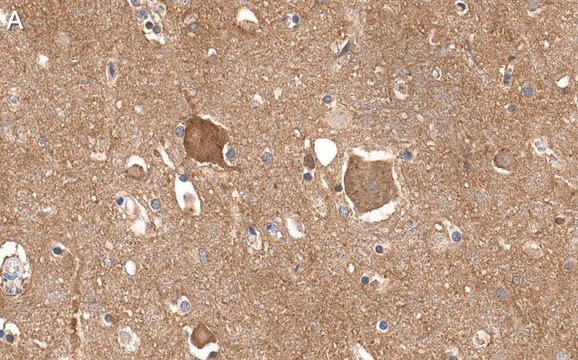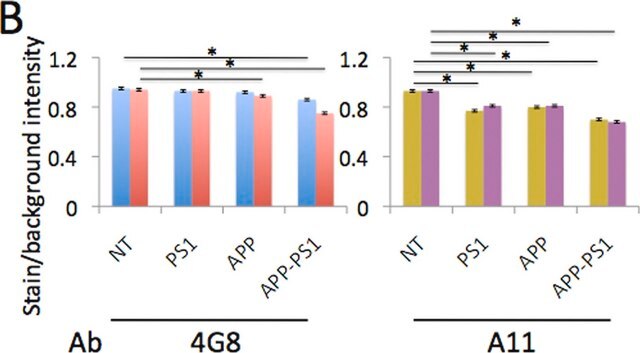MABN639
Anti-Amyloid βA4, clone 1E8 (Amino Terminus) Antibody
clone 1E8, 1 mg/mL, from mouse
Synonym(s):
Amyloid beta A4 protein, ABPP, APPI, APP, Alzheimer disease amyloid protein, Cerebral vascular amyloid peptide, CVAP, PreA4, Protease nexin-II, PN-II
About This Item
Recommended Products
biological source
mouse
Quality Level
antibody form
affinity purified immunoglobulin
antibody product type
primary antibodies
clone
1E8, monoclonal
purified by
affinity chromatography
species reactivity
human
concentration
1 mg/mL
technique(s)
immunohistochemistry: suitable
immunoprecipitation (IP): suitable
western blot: suitable
isotype
IgG1κ
UniProt accession no.
shipped in
wet ice
target post-translational modification
unmodified
Gene Information
human ... APP(351)
General description
Specificity
Immunogen
Application
Western Blotting Analysis: A representative lot was used to detect Amyloid βA4 in Western Blotting. (Wiltfang, et al. 2001; Serneels, et al. 2009; Maler, et al. 2007).
Immunoprecipitation Analysis: A representative lot was used to detect Amyloid βA4 in Immunoprecipitation. (Wiltfang, et al. 2001; Maler, et al. 2007).
Neuroscience
Neurodegenerative Diseases
Quality
Western Blotting Analysis: A 1:1,000 dilution of this antibody detected Amyloid βA4 in human Alzheimer′s brain tissue lysate.
Target description
Physical form
Storage and Stability
Avoid repeated freeze / thaw cycles.
Disclaimer
Still not finding the right product?
Give our Product Selector Tool a try.
Storage Class
10-13 - German Storage Class 10 to 13
Certificates of Analysis (COA)
Search for Certificates of Analysis (COA) by entering the products Lot/Batch Number. Lot and Batch Numbers can be found on a product’s label following the words ‘Lot’ or ‘Batch’.
Already Own This Product?
Find documentation for the products that you have recently purchased in the Document Library.
Our team of scientists has experience in all areas of research including Life Science, Material Science, Chemical Synthesis, Chromatography, Analytical and many others.
Contact Technical Service